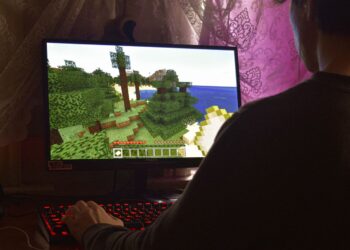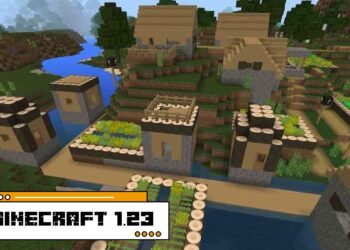Python turtle graphics is a great way to learn how to code. This blog post explores some of its applications.
What is Python Turtle?
Python Turtle Graphics is a simple approach for beginners to discover the logical world of programming. It is a Python module meant to make creating simple shapes and patterns in a graphics window easier by using Python code instructions. Python Turtle graphics may be used to produce creative designs, or they can be used to teach coding skills, visualize angles and forms, or comprehend how programming works.
Python Turtle Graphics produces a graphic that displays in the windows known as “turtle” or “turtle screen,” depending on the version of Python you are running. The turtle screen’s coordinate system spans from -200 to 200 on both axes. This implies that if you give the turtle a command like forward 50, it will move 50 units ahead regardless of where it is in relation to the center of the Turtle Screen.
How do I write a Python Turtle program?
Writing a Python Turtle program is an efficient approach to learn the fundamentals of Python computer programming. The language is a blend of English, mathematics, and images that may be used to teach programming principles and code. Python Turtle Graphics allows you to create shapes and patterns on the screen using easy instructions.
The simplest basic Python Turtle Graphics command is ‘advance,’ which moves the turtle along the route you provide. You may also turn or rotate your turtle as it goes by using the ‘backward,’ ‘left,’ and ‘right’ instructions. More advanced commands, such as penup, pendown, and setposition, may also be used to control how your turtle travels about the screen.
Aside from these fundamental commands, there are other more that may be used in Python Turtle programming, such as clearscreen, colors, text input/output, and producing patterns or pictures. When creating your own Python Turtle Graphics software, it is beneficial to have previous coding knowledge, either with other languages such as JavaScript, HTML, or CSS, or a rudimentary grasp of arithmetic principles such as angles or coordinates.
 What are useful Python Turtle commands?
What are useful Python Turtle commands?
Python Turtle is a well-known framework for making interactive graphics, especially in educational settings. It is based on the Tkinter graphical user interface (GUI) environment and enables users to use simple commands to create 2D objects and pictures. Users may also manage the color, shape, size, and orientation of the objects they build using Python Turtle.
The most frequent Python Turtle instructions are:
- forward, which moves the turtle along a particular path;
- backward, which moves it in the opposite direction;
- left & right, which rotates it appropriately; and
- circle, which creates a circle around its location.
The turtle may also be told to create lines by specifying its beginning point and how far it should move in that direction. Most of these commands may also be customized using rotation, width, and color parameters. Finally, there are a number of additional shortcut functions available, such as dot for drawing dots or stamp for generating an identical replica of the turtle somewhere onscreen.
Drawing a Circle with Python Turtle
Python Turtle Graphics is a popular method for teaching beginning programmers the fundamentals of Python programming since it helps them to see their code and develop a better knowledge of the language. In this post, we’ll look at how to create a circle in Python using Python Turtle Graphics.
Python Turtle Graphics is an efficient means of creating circles since the programmer can control the size and speed of the circle. Follow these instructions to make a circle using Python turtle:
- Place a new turtle instance on your screen.
- Configure your preferred circle’s specifications, such as size, color, and speed.
- Use the forward() command to move your turtle forward, or the right() command to move your turtle in an arc by setting its radius to the specified value in the front() function.
- Using a loop, repeat the preceding step three times.
- When you’re through with this step, use fillcolor() of Color to add color if desired.
Any beginning coder may easily draw circles with Python turtle. You can make gorgeous circles that add interest and elegance to any software interface by following the five easy steps explained above.
Drawing a Spiral with Python Turtle
Drawing a spiral using Python Turtle is a simple method to learn about the capabilities of Python Turtle Graphics. A spiral is a geometric object that spins radially around itself and develops outward in an automated rhythm. It may be used to make spirals, circles, lines, polygons, flowers, and trees, among other things.
Python Turtle is a graphics module that many programmers use to create graphics applications. Objects are created using symbols rather than pixels. The Python turtle module allows users to use code to construct forms of various colors and sizes without any previous creative skill or training. Users may also save their drawings as photos to be used later or shared on social networking networks.
Users must apply fundamental mathematical calculations such as angles and radians, as well as particular instructions inside the turtle library module, to create a spiral using Python Turtle.
Drawing a Cycloid with Python Turtle
Python Turtle Graphics is a strong programming language with turtle graphics that is used to view geometry primitives such as line and circle. It also serves as a platform for making interactive art, illustrating mathematical ideas, and playing games, among other things.
In this post, we will look at how to design a cycloid or roulette using Python turtle graphics.
A cycloid, also known as a roulette, is a curve drawn by the path of a point as it goes around the circumference of a circle and rolls along a straight line without sliding. To draw a cycloid using Python Turtle, we must first establish our beginning coordinates and then compute intermediate coordinates using the cycloid equation, allowing us to draw the form one segment at a time. Finally, we can utilize Python Turtles commands to specify how to draw each segment until the full shape has been produced.
Drawing a Helix with Python Turtle
Python Turtle Graphics is a popular approach to introduce children to programming. It is a collection of graphic functions that may be used to create different forms such as lines, circles, and squares.
Python Turtle Graphics can create a three-dimensional helix by connecting a number of points in the shape of a spiral. The user may customize the length of the helix and add color to make it more aesthetically attractive.
To draw this sort of helix using Python Turtle Graphics, various parameters must be defined, such as the angle θ, which specifies how many degrees each point should be rotated with respect to each other, and a value for N, which determines how many points will be utilized to create the helix. After these two parameters are suitably configured, one may use the ‘forward’ function, a ‘angle’ command, and two loops to go through all of these points one at a time until it achieves the required form.
Furthermore, by providing proper code, several aesthetic effects like as adding color or making particular areas thicker may be easily introduced with Python Turtle Graphics.
Can I make games with Python Turtle?
Python Turtle is a well-known toolkit for developing 2D graphics, such as games. It functions with turtles, which create lines and forms in their wake. Forward, backward, left, and right commands may be used to move the turtle.
Python Turtle has been used to make basic games like mazes and tic-tac-toe, as well as more complicated games like Pong.
Because it lets the user to personalize the visuals with color and fonts, Python Turtle might be handy for designing basic yet aesthetically pleasing games. It provides a simple approach for a novice coder to produce something visually appealing for others to play or watch. Despite the ease of writing, getting acclimated to the syntax of drawing instructions may take some time. However, with some experience and knowledge, anybody will be able to construct fantastic Python Turtle projects in no time.
Where can I learn more about Python Turtle?
Python Turtle is a Python language module used to make rudimentary visuals on the screen. Stephen Fritzinger created it in the mid-1980s as an alternative to typical computer graphics libraries. The primary goal of Python Turtle is to allow newcomers to learn programming and get more comfortable with the graphical environment without prior programming expertise or experience.
Python Turtle is most often learned via online tutorials and books that utilize this library as the foundation for constructing their own applications. There are also other online sites, like as StackOverflow, Code Academy, and YouTube, that provide thorough lessons and videos on how to use the library. Users may also utilize the many libraries provided on the Python website to further build their applications. Turtle’s simple syntax makes it simpler for beginners to learn how to code and create stunning drawings or other images on their computers.
With little practice and devotion, one may quickly get acquainted with the functions of this library, which will take them deeper into programming for different purposes.




 What are useful Python Turtle commands?
What are useful Python Turtle commands?












